Over the next decades the world’s population will undergo social and economic changes, which will notably influence the consumption and production of meat around the world. In the stream of these changes, broiler meat seems to enjoy a series of important features when compared to mostly beef and pork. This may convert it to a leading protein in the context of a future “meat-hungrier” world

The world population will grow and will reach an astonishing 8 billion people by 2030 from about 6.1 billion in 2000, a 150% growth in 30 years. Percentage wise this expansion will be the highest ever in Africa, with 175% population growth from 800 million to 1.4 billion, while on the other continents the expansion will vary from 32% to 40%. However, considering the population size, Asia, as whole, will be the leading continent, with a population of 4.1 billion people in 2030, equivalent to 60.5% of the world’s population. In the same time frame the world’s population will age as well. By 2030, the average population’s age in the European Union will be about 44 years, in North America and Oceania around 38 years, Latin America & Caribbean and Asia, around 32 and Africa, the youngest continent, then, around 22 years. Also the urbanisation population rate will change dramatically through to 2030, when 75% of it, or 5 billion people, approximately, will be living in urban areas, from just 25%, in 1950, while some 3.2 billion will be living in rural areas. This dramatic change in the rate of urbanisation in the future brings some reflections but it is not yet consistently addressed, or evaluated. The world will have fewer people in the countryside to produce the feed and food that will be demanded by the growth in population and to cope with the challenges posed by the change in their corresponding diets
Growing incomes
Regarding economy, the forecasts are quite exciting, as global population will become richer. The average world GDP per capita emerges from US$ 4,535, in 1990, to US$ 6,103, in 2010 to finally reach as high as US$ 11,248, in 2050, a growth of 148% for a corresponding growth of approximately 72% in the population’s size. China and India will lead, by far, in terms of GDP annual growth rate in the years to come, followed by Latin America, Mexico, Middle-East and South Korea, in this order, with a more modest annual rate. In developed countries, with mature markets, an even smaller growth is expected. In the stream of the GDP performance, income growth will be seen in developing countries (around 5.5%) much more than in developed countries (around 2%) and well above the world’s average (some 3.3%). Benefiting from the world enrichment, the population living with a US$ 1/day or less will be cut by half, to 749 million, in 2015, or 13.2% of the world’s population, from 1.269 billion, in 1990, or 32% of the world’s population. East Asia and South Asia will experience the most dramatic decline, both in number of people and corresponding percentage of their populations, followed by Latin America. In Sub-Saharan Africa the number of people in this category is forecasted to increase in size, but decline in the corresponding percentage of its population.
Up scaling of diets
The immediate reflection of the economic improvement of those populations is the expected upscaling of their diets. People will start eating more, increasing the daily caloric intake. By increasing the calories intake world hunger will hopefully decline in those regions, particularly in South and East Asia, where the size of the undernourished population must plummet. The undernourished population will likely decline in Latin America, while in Sub-Saharan Africa, Near East and Northern Africa it will tend to be somewhat stable, with small variation in size over time. According to FAO, the world’s population average caloric intake will reach some 3,000 kcal/day, in 2030, from 2,600 kcal/day, in 1997-99, and about 2,000 kcal/day, in 1964-66. This calorie intake augument is be mostly fueled by the increased consumption of wheat, vegetable oils and meats, in general. Asia will lead growth, with annual demand for meats coming from 115 million tonnes, in 2007, to 149 million, in 2017, a 30% rise; in the sequence comes Latin America (from 37 to 47 million tonnes, or 27%); EU (from 58 to 65 million tonnes, or 12%); North America (from 44 to 48 million tonnes, or 7%) and Oceania (stagnated in 3 million tonnes in the period, with no growth in demand)

Yet the percentage growth in meat demand in developing countries must triumph over that in developed countries, the meat consumption per capita in developed countries will grow more and become almost three times higher - 70 kg/per capita/yr - than in developing countries - 30 kg/per capita/yr - which will experience, additionally, an important asymmetry across the continents over time, with Latin America consuming 60 kg/per capita, Asia, some 28 kg/per capita and Africa 10 kg/per capita of meat, annually, by 2020. Taking all of these changes into account, chicken meat consumption per capita should grow by 20% in developing countries and around 12% in developed countries, leaving behind pork, lamb and beef, and ascending from an opaque position in 1964-66, to become a front-runner, along with pork, in 2030
Efficient convertor
Broilers are very efficient vegetable protein-converting machines compared to pork and beef. While beef needs some 5 kg of feed to produce a kilogramme of meat and pork some 3 kg, broilers demand less than 2 kg - in fact 1.7 kg - to achieve the same result. Additionally, chicken meat is a lot greener to produce, as well. According to World Bank’s World Development Report 2011, producing one kilogramme of broiler meat demands, as a whole, 3,900 liters of water, while for pork the volume is 4,800 liters and for beef, 15,500 liters. The greenhouse gas emissions from intensive poultry production exploitations is equivalent to a driving distance of 22.7 km per kilogramme of meat produced, while for pork the relationship is 31.6 km/kg meat and for beef 79.1 km/kg, according to the same report. Landwise, the requirement to produce one kilogramme of chicken meat is minimal and equivalent, only, to that required for a kilogramme of eggs or fish from aquaculture. Therefore, it is far less than that demanded for pork, a lot smaller than that for intensive beef production and incomparably smaller than that for extensive beef production, according to a recent study carried out by Rabobank. The differences among the top three animal proteins still favour broiler meat over its competitors when it comes to the final consumer level, while a live chicken yields about 50% of its live weight at retail level, pig yields 45% and a steer, 36%, only, according to the same study. These yields’, when seen under an environmental impact perspective, use of soil, water, grain, fuel, manpower and etc., in general, demonstrate that broiler meat is the least resources-depleting one among the top three animal protein production chains
Universal acceptance

Unlike pork and beef, chicken meat enjoys zero religious restrictions and, therefore, is consumed by all religions adepts. Along with its universal religious acceptance, its leading affordability among the three animal proteins contributed to its popularity and has been a key factor in boosting its consumption around the world over the last decades. In Brazil, a 10-year retail prices historical series for beef, chicken meat and eggs, clearly testify its competitive advantage over beef, as a kilogramme of chicken meat is worth about 40% of a kilogramme of beef, on a long-run average. Compared to its counterparts, chicken meat is unquestionably healthier. A portion of 100 grammes of breast fillet contains 142 calories, 3 grammes of fat and 72 mg of cholesterol, only, parameters equivalent to those in 100 g of salmon. For the same amount pork sirloin contains 159 calories, 5 g of fat and 80 mg of cholesterol and beef sirloin, respectively, 171 calories, 7g and 76 mg
Functional properties
Besides all these advantages, chicken meat additionally has functional properties. Thanks to its mild colour and taste, it has tremendous capabilities as a raw material. As such, it can incorporate flavours and accept shapes and textures that do not conflict with its natural structural characteristics and organoleptic properties, thus making its applicability in the development of new meat products are almost endless. Thanks to these competitive advantages, broiler meat emerges as the most probable and promising response to a future meat-hungrier world. Yet demand will be characterised by distinct consumption patterns around the world, which will be driven by culture, habits and purchasing power, and the attributes that chicken meat present are of universal concern. What are we talking about? We are talking about the fact that no matter where and how chicken meat will be consumed in the years to come, it must be affordable, wholesome, safe and be capable to comply with a wide scope of expectations from consumers around the world
Saving grammes
In the broiler industry, gram is the ruler to measure the distance between a successful and a failing processing company. Therefore, maximising the process yield, by keeping losses and costs to a minimum and, consequently, competitiveness, affordability and profitability to a maximum, are the number one goals of all companies around the world. In this scenario, the plant management is required to pursue the performance of the micro variables, in addition to the macro variables, to be really successful! Two examples illustrate how important it is to focus on process details. Carcasses may easily lose between 0.5% and 1.5% of their slaughtered weight due to the subcutaneous fat layer melting during the scalding process. For a company running 200,000 bpd of 2.5 kg it may produce losses as the figures below show: 200,000 bpd x 2.5 kg live weight = 500,000 kg/day Losses percentage ranging from 0.5% to 1.5% Day: 2,500 to 7,500 kg Month: 62,500 to 187,500 kg Year: 750,000 to 2,250,000 kg Additionally, drip-loss affects sensorial quality of the meat, the appearance of the fresh product and the process’ economics, as any ± 0.5% in product’s moisture retention capability has a strong impact on the company’s bottom line. For a plant running 200,000 bpd of 2.5 kg, ± 0.5% may mean: 200,000 bpd x 2.5 kg live weight = 500,000 Kg/day ± 0.5% in product’s moisture retention capability Day: ± 2,500 kg Month: ± 62,500 kg Year: ± 750,000 kg
Securing wholesomeness
Whole carcasses or parts are primarily intended for human consumption. As such, it is mandatory, in the majority of countries, that they reach the market free of diseases and/or physical defects. Therefore, during processing carcasses undergo sanitary inspection to secure their wholesomeness. Fecal and/or bile contamination, skin problems (dermatitis and cellulitis) contusions and fractures are common causes of losses in poultry plants around the world due to salvaging and products downgrading. In Brazil, partial condemnation of chicken carcasses affected 6% of the country’s annual slaughter, inflicting losses that are estimated at 75 million kilogrammes of meat annually (5 billion birds slaughtered annually, 2.5 kg of live weight and 10% of the carcass weight lost by salvaging). The top six causes, responsible for 85% of the country’s annual loss, equivalent to 63.8 million kilogrammes of meat, are contamination, which accounts for 39% of the total, dermatitis and cellulitis 33%, fractures and contusions 18%, and arthritis 10%. With a social and environmental perspective, that loss is equivalent to the annual consumption of 2 million people fed annually a diet of 30 kg of chicken meat per capita and to some 70 thousand tonnes of corn and soy. The economic losses inflicted by the presence of minor physical defects on whole carcasses and/or parts, which are not salvageable, lead to the downgrade of products. The market prices of the downgrade products are lower than those obtained for grade-A products and the impact on the company due to this must be avoided
Number one priority
 |
| Broilers are very efficient vegetable protein-converting machines compared to pork and beef. |
The safety of poultry products must be number one priority as it is the only attribute that guarantees that poultry meat is proper and safe for human consumption. Its importance, in the context of the poultry industry, is the same for either domestic and/or international markets. The microorganisms of greatest concern for the poultry industry are Campylobacter, Salmonella ssp. and E. coli, according to the World Health Organization (WHO). In spite of the technological and operational advances achieved by this industry around the world, these pathogens are still relevant threats to the public health. According to a recently published study carried out by researchers at the University of Florida and focusing on the US market, these three microorganisms are among the top five causes of foodborne diseases. Campylobacter-poultry and Salmonella ssp.- poultry are, respectively, the first and fourth causes of foodborne outbreaks. In both cases they are responsible, every year, for the loss of thousands of work days and billions of dollars spent in medical treatment. Therefore reducing their presence to safe levels in poultry products must be a priority for every company
Facing segmentation
Last but not least, chicken meat has to face segmentation in the demand around the world, as world population richness increases. While in the lowest-income countries (people living with US$ 1 or less a day) the diets are fully-vegetable and geared exclusively to the survival of the population, in others, whose income reaches US$ 2 or more a day, meat gains importance in the daily diet by replacing part of the vegetables and grains. By ascending the social scale, when it comes to the transition countries, whose income level is well above the world’s average and meat represents a far larger proportion of their diets, its consumption is strongly associated with convenience, flavour and pleasure. Finally, by ascending further to the top of the world’s social pyramid, in the richest countries, meat is consumed not as an ordinary food, as we all know, but as a source of well being for embracing nutritional and functional properties. No matter what the consumers’ expectations are, chicken meat must comply with them all







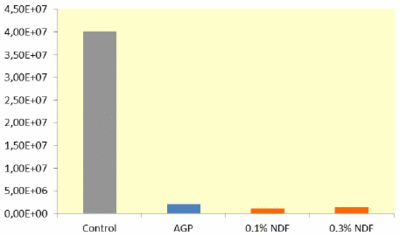




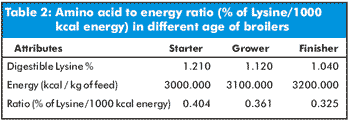
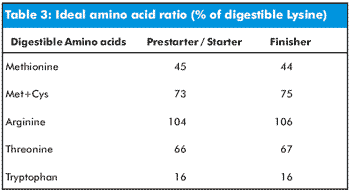
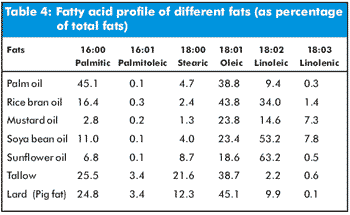
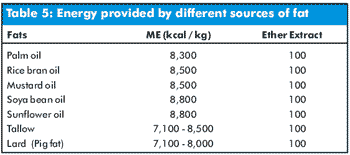
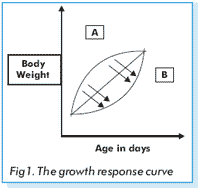
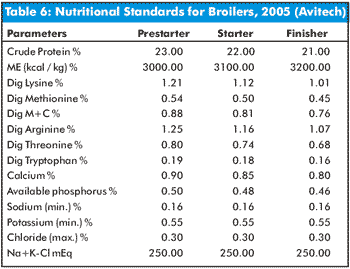







 In this article we will look at factors in the water system that should be evaluated to ensure that plenty of water is available when the birds need it. When checking the water system, the complete system should be evaluated. This means starting at the well and working through to the end of the drinker line.
In this article we will look at factors in the water system that should be evaluated to ensure that plenty of water is available when the birds need it. When checking the water system, the complete system should be evaluated. This means starting at the well and working through to the end of the drinker line.
 Management of the system at the house water panel involves monitoring water
Management of the system at the house water panel involves monitoring water 





